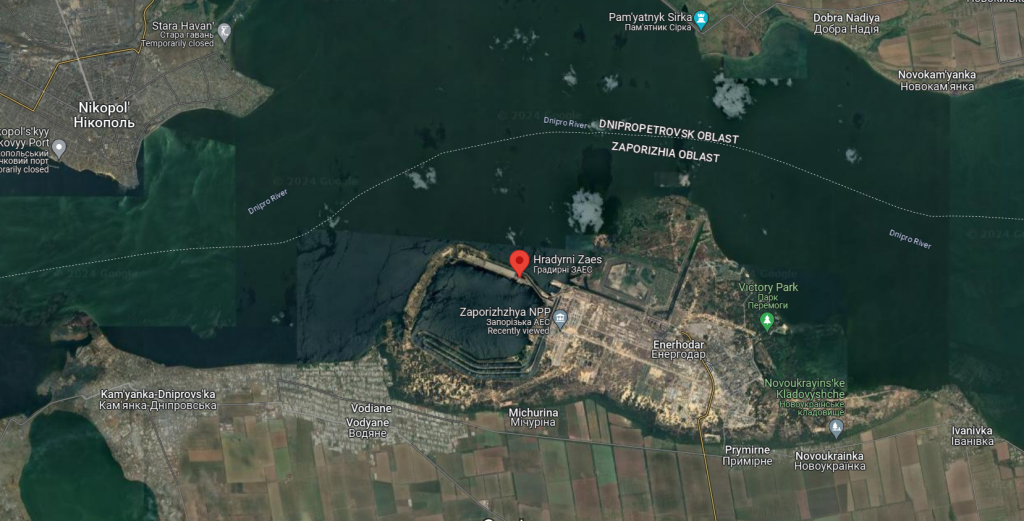Conflicting Reports and The Blame Game
On Sunday, a fire erupted at a cooling tower of the Zaporizhzhia NPP, a facility that has been under Russian control since the early days of their full-scale invasion of Ukraine in 2022. Both Ukrainian and Russian authorities confirmed that radiation levels remained normal, but the blame game between the two sides quickly escalated.

According to Yevgeny Balitsky, the Russian-installed governor of Ukraine’s Zaporizhzhia region, the fire was a result of shelling by Ukrainian armed forces. In a statement on Telegram, Balitsky claimed that Ukrainian forces had targeted the town of Energodar, leading to the blaze at the plant’s cooling system. On the other hand, Ukrainian President Volodymyr Zelensky accused Russian forces of deliberately setting the fire, describing it as an act of nuclear “blackmail” against Ukraine and the wider world.
Nuclear Safety Concerns Amid Escalating Tensions
The Zaporizhzhia Nuclear Power Plant has been a flashpoint in the ongoing conflict, with the International Atomic Energy Agency (IAEA) repeatedly expressing concerns about the potential for a nuclear accident due to military actions around the site. Despite the fire, both Russian and Ukrainian officials assured that there was no immediate threat of a steam explosion or any other nuclear hazard.
The IAEA, which has staff stationed at the Zaporizhzhia NPP, reported seeing “strong dark smoke” rising from the plant’s northern area following multiple explosions. The agency was informed of an alleged drone attack on one of the cooling towers, but no impact on nuclear safety was reported. This incident has once again highlighted the precarious situation at the plant, which remains under Russian occupation.
The Strategic Importance of Zaporizhzhia NPP
Located on the eastern bank of the Dnipro River, the Zaporizhzhia Nuclear Power Plant is strategically significant in the ongoing conflict. Ukraine controls the western bank of the river, while Russian forces have entrenched themselves on the eastern side, using the plant as a military stronghold. Kyiv has accused Moscow of militarizing the facility, placing heavy weapons there, and using it as a shield against Ukrainian attacks.

The plant’s six nuclear reactors are currently in cold shutdown, but the overall risk remains high. The IAEA and other international bodies have called for restraint, warning that any reckless military action could lead to a catastrophic nuclear accident.
International Response and Future Implications
The fire at the Zaporizhzhia NPP occurred in the context of escalating military operations in the region. Ukrainian forces have recently launched a counteroffensive, including a surprise incursion into Russia’s Kursk region. This operation, which marks the first time Ukrainian troops have occupied Russian territory, has been a significant development in the conflict, further straining relations between the two countries.

In response, Russia has intensified its military efforts to contain the Ukrainian advance, with authorities imposing counter-terror operations in Kursk and other border regions. The situation remains fluid, with both sides engaging in a tense and dangerous standoff.
Global Reactions and Ongoing Concerns
The international community has been closely monitoring the situation at the Zaporizhzhia NPP, with the IAEA urging all parties to exercise maximum restraint. The potential for a nuclear disaster looms large, particularly given the proximity of the fighting to the plant. The IAEA has repeatedly called for the demilitarization of the site and for it to be returned to Ukrainian control to ensure safety and stability.
As the conflict continues to unfold, the Zaporizhzhia Nuclear Power Plant remains a critical point of concern. The recent fire serves as a stark reminder of the risks associated with military actions around nuclear facilities, and the world watches with bated breath as the situation develops.


